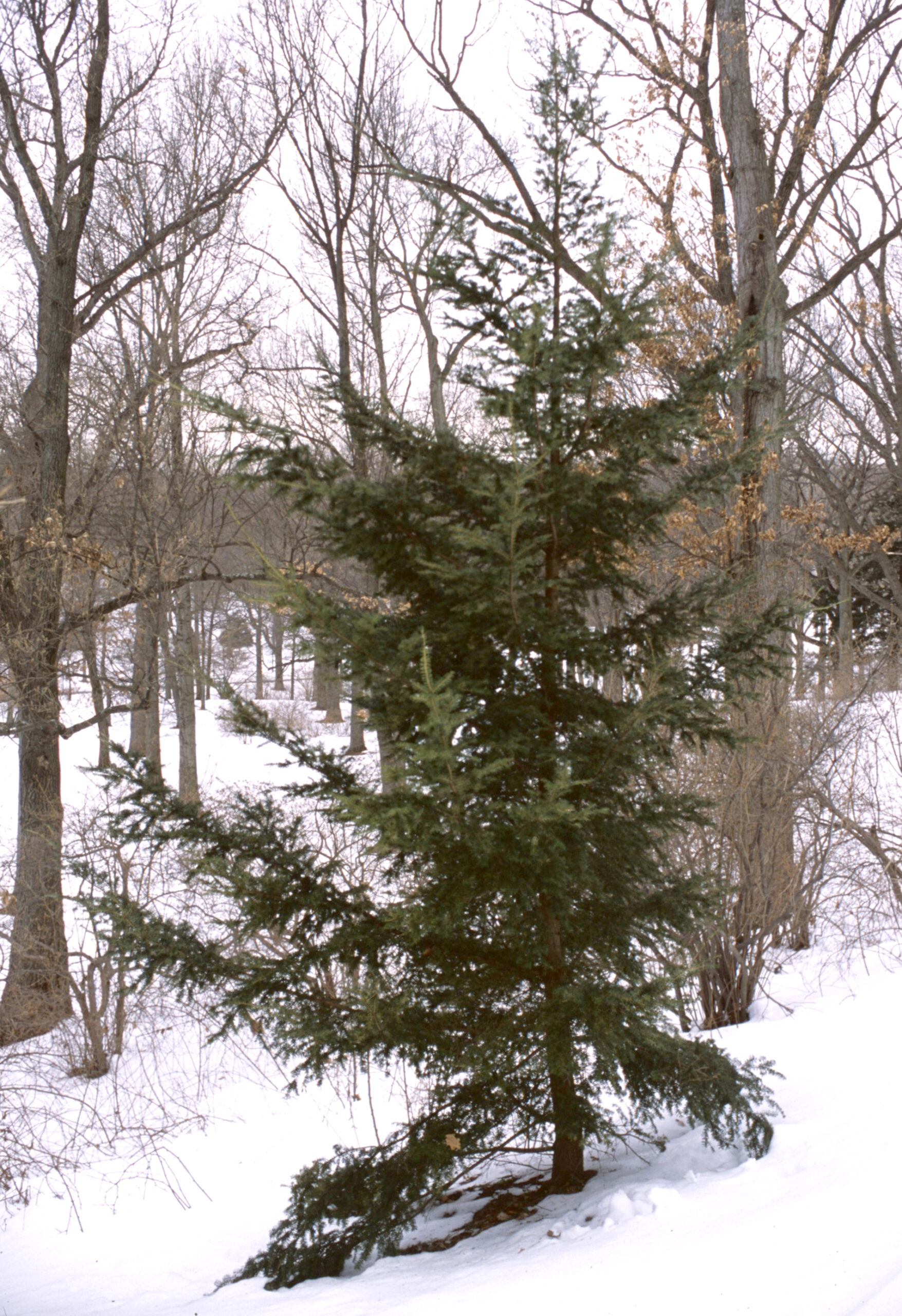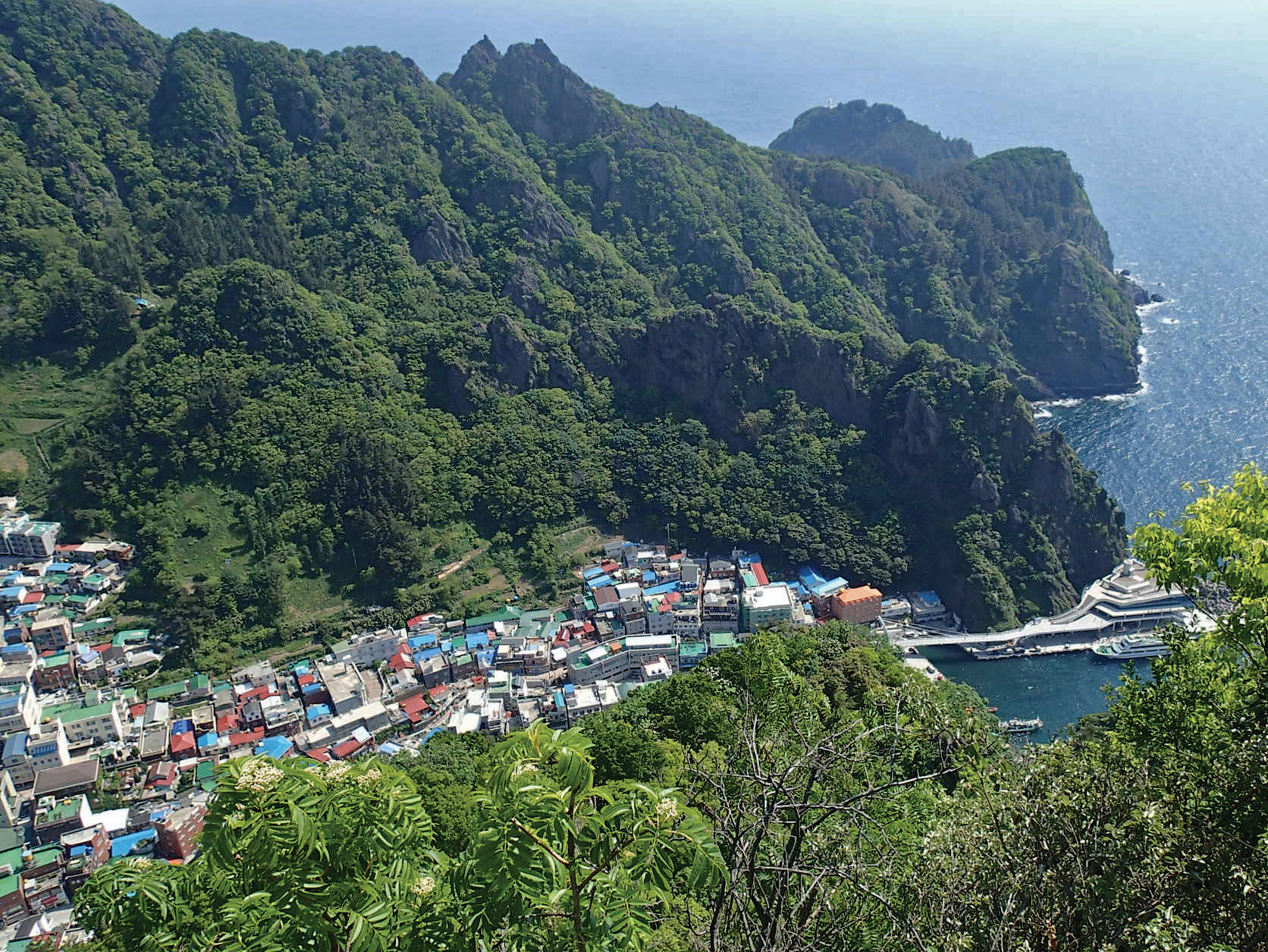
Ulleungdo Hemlock
Tsuga ulleungensis

- Accession Number
- The alpha-numeric value assigned to a plant when it is added to the living collection as a way of identifying it.
- Accession Date
- The year the plant’s accession number was assigned.
- Common Name
- The non-scientific name for the plant.
- Scientific Name
- The scientific name describes the species of an organism. The first word is the plant's scientific genus and the second is the specific epithet. This two-word binomial is sometimes followed by other taxonomic descriptors, including subspecies (denoted by "ssp."), variety (denoted by "var."), form (denoted by "f." or "forma"), and cultivar (denoted by single quotation marks).
- Plant Family
- The family to which the plant belongs.
- Propagation Material
- The first part (material code) describes the material used to create the plant. The most common codes are "SD" (seed), "EX" (existing plant), "PT" (plant), "CT" (cutting), "SC" (scion), "SG" (seedling), and "GR" (graft). The second part describes the lineage the plant is derived from. The last part describes the year of propagation.
- Collection Data
- The first part indicates provenance (place or source of origin) using a letter code ("W" = wild, "G" = garden, "Z" = indirect wild, "U" = uncertain). The second part lists the plant source. For wild-collected material, the collector, collection number, and country are given.
- Location
- The location of the plant on the landscape.
REPUBLIC OF -
CHOLLIPO ARBORETUM, KOREA
In 2003, a researcher collected a sample from this tree and its nearby sibling. Genetic analysis revealed something surprising—the trees didn’t match other hemlocks bearing the same name.
Sometimes scientific discovery comes through serendipitous means. Seed for this tree arrived at the Arnold Arboretum in 1983. It was a gift from the Chollipo Arboretum, in South Korea, which had obtained the seed on Ulleungdo—a volcanic island in the center of the Sea of Japan. The seeds were labeled as southern Japanese hemlock (Tsuga sieboldii), and as this tree and its nearby sibling spread their branches on the grounds at the Arnold Arboretum, this name was retained.
Then, in 1997, an invasive insect known as the hemlock wooly adelgid (Adelges tsugae) arrived at the Arboretum. Its range had spread northward from its original introduction site near Richmond, Virginia, and as it did so, researchers increasingly began to study the insect, searching for ways to mitigate its devastation to North American hemlock forests. A graduate student from Yale University, Nathan Havill, came to the Arboretum in 2003 to harvest samples from the well-documented and diverse hemlock collection. One of his dissertation advisors, Michael Donoghue, suggested that to understand the insect, one must also understand the plants.
Havill’s genetic work suggested that these hemlocks from Ulleungdo were distinct from other southern Japanese hemlocks. This discovery prompted Peter Del Tredici, who is now a senior research scientist emeritus at the Arboretum, to dig deeper. In 2008, Del Tredici visited Ulleungdo with colleagues—both American and South Korean researchers—to collect from additional populations of hemlocks. For the resulting genetic research, Del Tredici turned to Garth Holman, a graduate student at the University of Maine, and in 2014, when Holman’s dissertation was complete, his results suggested that these Ulleungdo hemlocks warranted treatment as a new species. In 2017, the new name was officially published: Tsuga ulleungensis.
Del Tredici was not the first Arboretum staff member to visit Ulleungdo. The well-known plant collector Ernest Henry Wilson visited the island in the spring of 1917. His colleague Takenoshin Nakai guided him, and Wilson collected herbarium specimens of the hemlocks and took photographs of the trees. Both Wilson and Nakai referred to the trees as the southern Japanese hemlock (Tsuga sieboldii). Incidentally, even though these two species look almost identical to one another, Holman’s research showed that the Ulleungdo hemlock is more closely related to the northern Japanese hemlock (T. diversifolia).
Altogether, this story is testament to the research value of a well-documented plant collection. Without records of the origin of this anomalous tree at the Arnold Arboretum, the mystery of the Ulleungdo hemlock might have never been resolved.
South Korea
Viewing this plant in-person? Look for these defining characteristics:
About Our Collection
Fun Facts
Stats
- Living Specimens
- Specimens Dead or Removed
- First Addition
- Most Recent Addition
- Tallest Specimen



Living Specimens
| Plant ID | Accession Date | Received As | Origin | Source |
|---|---|---|---|---|







